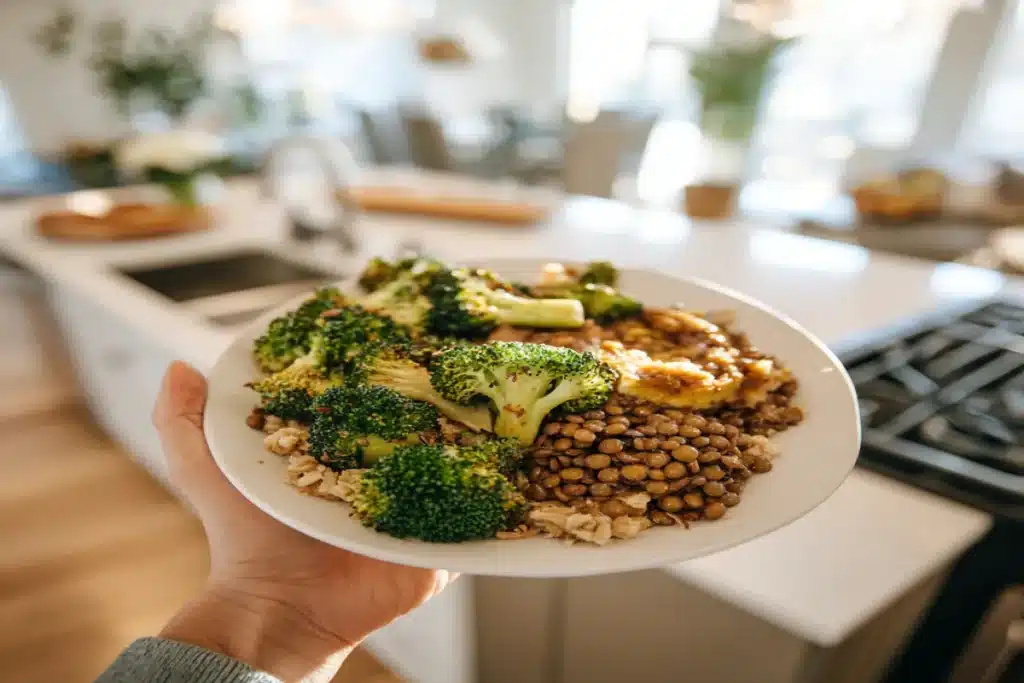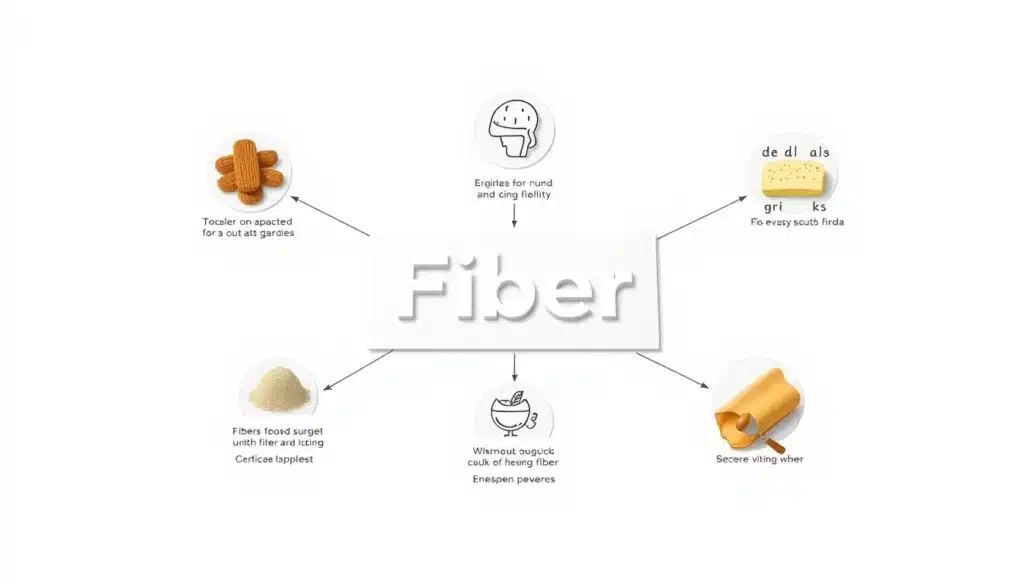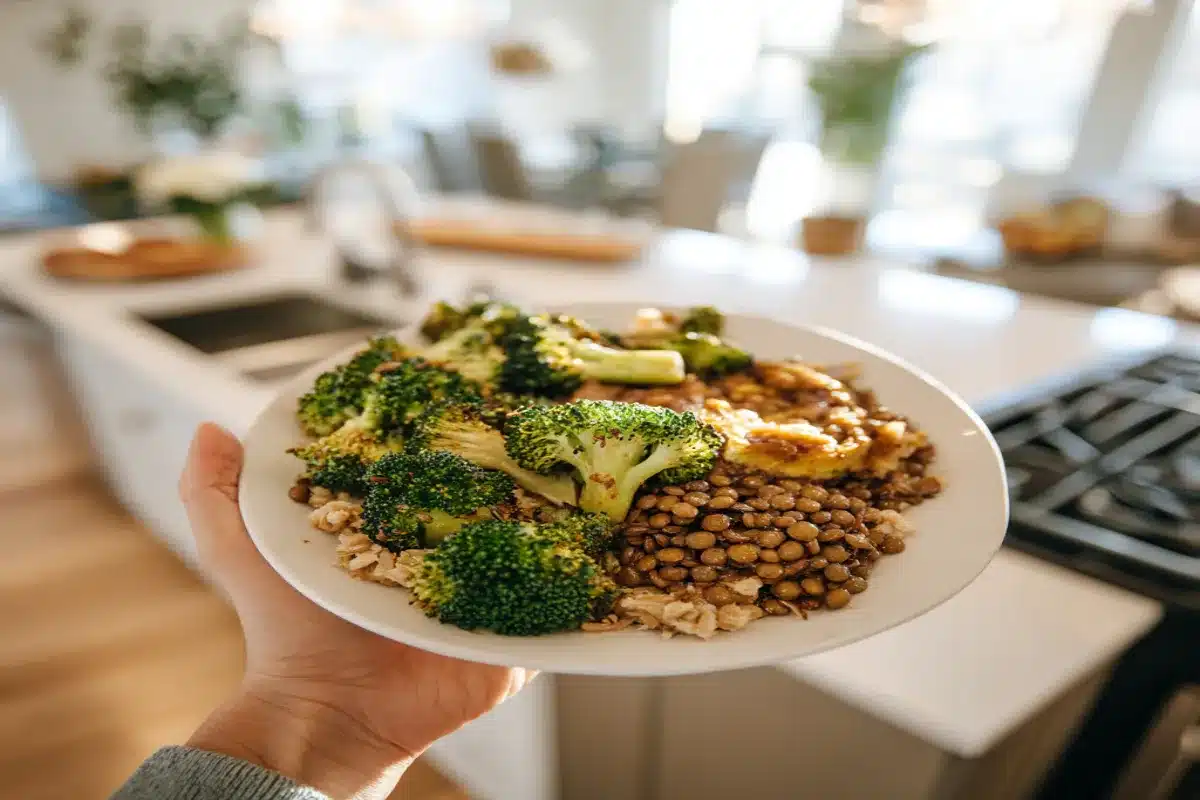Introduction
In recent years, wellness trends have exploded across social media—some helpful, others questionable. One of the latest to take off is fibermaxxing, a diet movement that focuses on consuming large quantities of dietary fiber daily. But what is fibermaxxing really about? Is it a sustainable way to lose weight, support gut health, or simply another fleeting trend?
In this article, we’ll break down the science behind fiber, why fibermaxxing is trending, how it affects your body, and whether it’s healthy long-term. Whether you’re curious about improving your digestion or looking for new ways to manage weight, this guide provides everything you need to know.
Looking for inspiration? Try these nutrition-focused ideas on how to boost gut health naturally.
fibermaxxing with high-fiber foods for gut health
What Is Fibermaxxing?

Fibermaxxing is the practice of intentionally increasing your daily fiber intake—often dramatically—to promote better digestion, satiety, and weight management. While the average adult is recommended to consume 25–38 grams of fiber daily, fibermaxxing enthusiasts might aim for 40–70+ grams, typically through plant-based foods or supplements.
This trend promotes the idea that more fiber equals better health, faster weight loss, and detoxification. However, the truth is more nuanced, as excess fiber can have drawbacks too.
Origins and Rise of the Fibermaxxing Trend
The fibermaxxing phenomenon gained popularity through platforms like TikTok and Reddit. Influencers began sharing “fiber-maxxing challenges” showcasing fiber-rich smoothies, veggie meals, and supplement stacks. What started as a niche practice soon became a viral movement.
Fibermaxxing aligns with broader wellness movements that emphasize clean eating, gut health, and whole-food nutrition, particularly among Gen Z and millennials.
But is this trend rooted in science or just social media hype?
The Role of Soluble and Insoluble Fiber
To understand fibermaxxing, it’s important to know the two main types of fiber:
| Fiber Type | Function | Examples |
|---|---|---|
| Soluble Fiber | Dissolves in water to form a gel-like substance, helping lower blood sugar and cholesterol | Oats, apples, citrus fruits, beans |
| Insoluble Fiber | Adds bulk to stool and supports bowel regularity | Whole grains, nuts, cauliflower, dark leafy greens |
Both forms are essential, and a balanced intake supports healthy digestion, nutrient absorption, and microbial diversity in the gut.
How Fiber Supports Digestion and Gut Health
Fiber acts as food for the beneficial bacteria in your gut (a.k.a. prebiotics). This microbial support strengthens the gut lining, reduces inflammation, and helps regulate blood sugar.
Fiber also bulks up stool, making it easier to pass and reducing risks of constipation, hemorrhoids, and diverticulitis.
Discover great ideas like adding gut-friendly recipes to your weekly meal plan.
Why Fibermaxxing Is Gaining Popularity
The Influence of TikTok and Social Media
Like many modern diet trends, fibermaxxing gained traction through viral content. TikTok creators began sharing personal experiences about fiber boosting their digestion, curbing their hunger, and helping with weight loss—all with quick, catchy videos featuring massive salads, psyllium husk drinks, and high-fiber snacks.
This user-generated movement has made the idea of fiber not only cool but necessary for a wellness lifestyle. The hashtag #fibermaxxing has drawn millions of views, reflecting a shift toward high-fiber diets as a badge of health consciousness.
Moreover, Reddit communities like r/nutrition and r/loseit have engaged in deep discussions about fiber’s role in satiety, metabolic regulation, and even skin clarity.
Check out our guide on viral wellness trends and what science really says about them.
Public Awareness Around Gut Health and Weight Loss
People are becoming increasingly aware that gut health is linked to immune function, mental health, and weight. Fibermaxxing plays into this narrative by encouraging foods that feed beneficial gut bacteria—key for digestion, inflammation control, and mood stability.
Compared to fad diets, fibermaxxing seems less extreme—it doesn’t eliminate food groups, and it promotes whole-foods eating. That’s why it resonates with health-conscious audiences who want sustainable changes.
Fibermaxxing and Weight Loss: What Science Says
Can the Fibermaxxing Trend Help You Lose Weight?
Short answer: Yes—when done correctly. Fiber creates volume in the stomach without adding calories. It slows digestion, regulates blood sugar spikes, and increases satiety, all of which can support caloric control and reduced snacking.
Several studies have shown that individuals with high fiber intake tend to have a lower BMI and reduced body fat. In fact, even modest fiber increases can help with long-term weight management when combined with a balanced diet and physical activity.
One 2021 clinical trial found that participants who added just 10 grams of fiber daily lost more weight than those who didn’t change their fiber intake—even with no other dietary changes.
Satiety, Cravings, and Calorie Control

Fiber-rich foods like beans, lentils, and vegetables expand in the gut and trigger fullness hormones like GLP-1 and peptide YY. This makes you feel satisfied sooner and helps reduce overall calorie intake.
Here’s a quick look at high-fiber foods and how they support appetite control:
| Food | Fiber (per cup) | Satiety Level |
|---|---|---|
| Lentils | 15g | Very High |
| Chia Seeds | 10g | High |
| Broccoli | 5g | Moderate |
| Oats | 8g | High |
Don’t miss our weight loss-friendly high-fiber meal plans.
Tips for Gradually Increasing Your Fiber Intake
Going from 10g to 50g of fiber overnight is a recipe for gas, bloating, and discomfort. Fibermaxxing should be gradual. Here’s how to do it right:
- Increase by 5g every few days to allow your gut time to adjust
- Drink plenty of water—fiber needs fluid to work properly
- Eat fiber with every meal, not just one big load
- Chew thoroughly to assist digestion and minimize bloating
If you’re new to fiber, start with soluble sources like oats, cooked veggies, and fruits before introducing bulkier insoluble types like bran or raw greens.
Best High-Fiber Foods to Eat Daily
Add a variety of high-fiber whole foods to your routine. Here’s a smart list:
| Category | Food | Fiber Per Serving |
|---|---|---|
| Grains | Quinoa, Oats, Brown rice | 4–8g |
| Vegetables | Broccoli, Carrots, Kale | 3–5g |
| Fruits | Apples, Berries, Pears | 3–7g |
| Legumes | Lentils, Chickpeas, Black beans | 6–15g |
| Seeds/Nuts | Chia, Flax, Almonds | 4–10g |
What Happens When You Start Eating More Fiber?
Physical Effects of a High-Fiber Diet
When you begin fibermaxxing, your body will likely go through a short adjustment phase. Depending on your previous fiber intake, changes may include:
- More frequent bowel movements: Fiber increases stool bulk and encourages regularity.
- Improved stool consistency: Soluble fiber softens stool, while insoluble fiber adds firmness—together, they optimize digestion.
- Feeling fuller after meals: High-fiber meals delay gastric emptying and extend satiety.
- Increased flatulence: As gut bacteria break down undigested fiber, they produce gas—especially early on.
These effects are common and usually subside once your body adapts. Most people report feeling “lighter,” more energized, and less bloated over time.
Positive and Negative Reactions in the First Week

Here’s a look at typical short-term responses during your first 7 days of fibermaxxing:
| Day | Positive Effects | Possible Discomforts |
|---|---|---|
| Day 1–2 | Increased fullness, better energy | Bloating, gas |
| Day 3–5 | More regular digestion | Minor cramping |
| Day 6–7 | Reduced cravings, lighter feeling | Fewer side effects |
To minimize the negatives, balance your fiber with hydration, movement, and diverse food sources.
The Risks of Overdoing Fibermaxxing
What Happens if You Consume Too Much Fiber?
While fibermaxxing offers real benefits, too much of a good thing can cause issues. Going far beyond the recommended intake—especially without fluids—can lead to:
- Constipation (yes, too much fiber can do that!)
- Abdominal discomfort or cramps
- Nutrient malabsorption (fiber can bind to minerals like iron and zinc)
- Diarrhea in some cases if fiber intake isn’t balanced
Experts suggest staying within 25–38g/day for adults, unless advised otherwise by a healthcare provider.
Signs You’re Going Overboard with Fiber
If you’re experiencing any of these symptoms, it might be time to scale back:
- Excessive bloating or gas lasting more than a week
- Feeling overly full or heavy after meals
- Irregular stools or straining
- Lowered appetite and food fatigue
Discover great ideas like ways to balance fiber intake for optimal health.
Is Fibermaxxing Healthy in the Long Term?
What Dietitians Say About Fibermaxxing
According to registered dietitians, fibermaxxing can be healthy, but it depends on how it’s done. A gradual increase of whole-food fiber from fruits, vegetables, grains, and legumes can:
- Support digeVegetarian Recipesstive health
- Improve blood sugar regulation
- Lower LDL cholesterol
- Reduce risk of chronic diseases like heart disease and type 2 diabetes
However, many experts warn that extreme versions of fibermaxxing—especially via supplements—can backfire. Over-reliance on powders or fiber-enhanced products might lead to nutritional imbalances.
In short: Yes, fibermaxxing is beneficial—if rooted in balance and whole-food nutrition.
Who Should and Shouldn’t Try the Fibermaxxing Trend
Fibermaxxing isn’t ideal for everyone. Individuals with digestive conditions like IBS, Crohn’s disease, or a history of bowel obstruction should avoid rapid fiber increases without medical supervision.
It’s also not suited for:
- Young children (can impact growth and appetite)
- Older adults with slow digestion
- People taking medications that interact with fiber (like some thyroid drugs or antidepressants)
Those who are generally healthy, however, can enjoy many benefits from mindful fibermaxxing as long as they keep hydration and food variety in check.
Looking for inspiration? Try our expert-approved list of high-fiber recipes.
Key Facts and Nutritional Insights About Fiber
5 Fast Facts About Dietary Fiber
- Fiber is only found in plants — Animal products contain zero fiber.
- Most Americans don’t get enough fiber — The average intake is around 15g/day, far below recommended levels.
- Fiber can reduce the risk of several cancers, especially colon cancer.
- Soluble fiber helps lower cholesterol, especially LDL (“bad”) cholesterol.
- High-fiber diets are associated with longevity and improved metabolic health.
Recommended Daily Fiber Intake for Adults

| Age Group | Women | Men |
|---|---|---|
| 19–50 years | 25g/day | 38g/day |
| 51+ years | 21g/day | 30g/day |
Remember: balance is key. Going too high without preparation or hydration can cause more harm than good.
What Is Fibermaxxing? Dietitians Explain the Trend
Fibermaxxing is a trending nutrition practice that involves significantly increasing your daily fiber intake to improve digestion, support weight loss, and boost overall wellness. It gained popularity on social media due to its simplicity and effectiveness.
Can the Fibermaxxing trend help you lose weight?
Yes, it can. Fiber keeps you full longer, stabilizes blood sugar, and curbs cravings. Combined with a calorie-controlled diet and exercise, fibermaxxing can support long-term weight loss.
What happens if you consume too much fiber?
Too much fiber can cause bloating, constipation, gas, diarrhea, or even nutrient malabsorption if not paired with proper hydration and balance. Moderation is key.
What happens when you start eating more fiber?
You may initially experience more frequent bowel movements, bloating, or gas, but these usually subside as your digestive system adjusts. Long-term benefits include better digestion and appetite control.
What is fibermaxxing and is it healthy?
Fibermaxxing is healthy when approached gradually and with whole foods. Extreme versions or fiber overloads through supplements can be harmful, so balance is crucial.
What are 5 facts about fiber?
It’s only in plant foods. 2) It supports heart health. 3) Most people under-consume it. 4) It aids digestion. 5) It may help prevent some cancers.












Leave a Comment